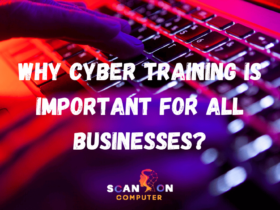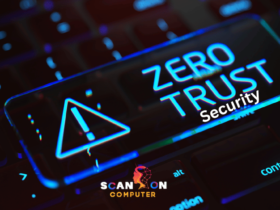Zero trust and SASE technologies provide organizations with vital protection from threats to their network infrastructures, making both essential components of an overall cybersecurity strategy.
Organizations should consider SASE solutions through the lens of a zero-trust framework to accelerate their journey toward creating a secure software environment. They may also benefit from employing a unified security platform which facilitates cross-capability data sharing and automation tools and technologies.
Zero Trust vs. SASE
As businesses move to the cloud, security systems must adapt. Amid an increase in cyber threats and remote working situations, as well as new devices like smartphones proliferating around us, businesses should implement stronger network architectures and security strategies – like Zero Trust and Secure Access Service Edge (SASE) solutions which may seem contradictory; in actuality they make for complementary components of modern security systems.
SASE provides an integrative networking and security approach that brings together various technologies into one platform, including CASB, NGFW, WAN Optimization, and Zero Trust Network Access into one flexible solution that meets any organization’s security needs.
By using SASE, organizations can improve management, automate processes and analyze analytics more efficiently while taking advantage of security features like identity verification, constant authentication and default deny policy to mitigate risk across their distributed networks. Zero Trust and SASE serve as cornerstones of any robust cloud security strategy.
What are Zero Trust and SASE?
With the increased adoption of remote work, cloud computing, and Internet of Things (IoT), cybersecurity processes, strategies, and networks is more essential than ever. Implementing a Secure App and Server Encryption solution utilizing Zero Trust principles may be one way of doing this; more comprehensive SASE solutions also include other security measures such as sandboxing, micro-segmentation, identity and access management among others.
SASE solutions combine networking capabilities that facilitate user connectivity from any device with security features that enforce organizational policies in real-time. They do this using a context-aware framework which integrates networking and security functions seamlessly across real time so as to protect data irrespective of where users connect from.
Zero Trust and SASE are complementary technologies, meaning they can both be implemented independently or jointly. Zero Trust serves as the cornerstone of any SASE implementation because its security policies enable continuous identity verification, path selection, routing, quality of service optimization and latency reduction – these all play key roles in SASE implementations. Therefore, businesses should first adopt a Zero Trust strategy before prioritizing SASE as their long-term goal.
Zero Trust and SASE: What Are the Similarities?
Due to remote work and cloud migration, organizations are seeking more robust cybersecurity processes, strategies, and network architectures. Instead of security models which rely on protecting only one area at once such as perimeter security models do, Zero Trust and SASE frameworks offer strong data protection in distributed environments.
Both SASE and Zero Trust use dynamic security policies that encrypt traffic between networked devices and remote ones, as well as a continuous verification process using identity and context-aware trust levels to determine whether access should be granted. In addition, SASE allows organizations to track user and device behaviors to create risk profiles that enable more granular security controls.
SASE and Zero Trust both utilize a single management platform for network and security functions, making administration tasks simpler while decreasing risks of attack.
What is SASE?
SASE is an integrated network security architecture which unifies network and security capabilities into an efficient framework for safeguarding how people work today, including remote working and SaaS applications.
SASE operates by never trusting any device, user or location and continually validating access. This involves monitoring both user and device behavior with automated decision making based on context – including UEBA capabilities – while supporting identity to drive policy changes according to risk assessments of individuals, devices and connections.
SASE utilizes digital certificates issued by Sectigo to authenticate human and machine identities, and enable a Zero Trust approach to network security that limits appliance sprawl as well as attacker lateral movement.
organizations considering SASE may implement it using technologies such as next-gen firewalls, CASBs and SD-WAN solutions. Furthermore, it supports unified policies to ensure all connections (remote or on-premises) adhere to consistent network and security controls – this reduces configuration errors while increasing network efficiency and security as well as operational agility when managing global workforces with changing needs.
Which is better: SASE or Zero Trust?
Zero Trust and SASE share many similarities. Both security frameworks aim to protect network infrastructure against threats, while protecting remote users and minimizing the risk of breaches. Both reduce breach impacts by restricting “blast radius”, making it harder for attackers to gain access to sensitive data.
One key distinction between Zero Trust and SASE is that SASE solutions focus on protecting cloud networks, software as a service (SaaS) applications and the internet. SASE uses technologies like cloud access security brokers, secure web gateways and firewalls to provide businesses with a centralized approach for securely connecting to their cloud infrastructure.
Does SASE automatically provide Zero Trust? No; while Zero Trust is a key part of SASE, organizations still need various initiatives in place in order to establish an effective Zero Trust framework. To learn more about implementing Zero Trust strategies in your business, download our free e-book: 10 Tenets of an Effective Zero Trust Framework which contains tips, tricks and best practices for doing so successfully.
Cloud Access Security Broker CASB
A cloud application security and behavior monitor, or CASB, monitors cloud applications to identify any patterns of abnormal behavior that could indicate an insider threat. By alerting security teams of potentially harmful activities, CASB can prevent sensitive data from being shared, corrupted, or deleted and reduce risk. In addition, its encryption/fingerprinting functionality further decreases risks of data loss.
A comprehensive cloud access security broker solution should include advanced capabilities to detect, alert and respond to cloud threats, such as adaptive access control for users with restricted privileges or device posture analysis and threat intelligence capabilities. In addition, this can include user-centric adaptive access control or device posture analysis capabilities and even real-time quarantine functions that block malicious activity before it even reaches corporate networks through SSL man-in-the-middle technology, proxies or real-time quarantine functions.
Selecting an effective Cloud Application Security and Behavior Blocker (CASB) solution is key for organizations that rely on cloud applications. Security teams come in all shapes and sizes; businesses should choose one that is both scalable and manageable for maximum flexibility and visibility into cloud usage, while providing integration into existing security infrastructure.
Data Loss Prevention DLP
Zero Trust and SASE share some similarities, yet don’t entirely overlap. SASE, for instance, reduces data leakage risk by restricting sensitive information from leaving a corporate network via security policies implemented within that limit access to specific cloud apps, IoT devices and SD-WAN tools. Furthermore, SASE solutions often come designed with simple user interfaces so administrators can automate some repetitive tasks and save themselves some time with SASE solutions.
Zero Trust provides more comprehensive protection from threats. Its core principles are an identity-driven default-deny approach and continuous authentication. Zero Trust also minimizes attacks by quickly identifying points of entry and detecting any malicious behavior quickly.
Businesses are investing in strengthening their cybersecurity processes, strategies, and network architectures to protect against data breaches and prevent adversary nation states, cyber criminals and malicious insiders for various reasons such as corporate espionage, financial gain and personal gain. Many threats have become increasingly sophisticated over time so it’s imperative that organizations employ all means available to provide themselves with adequate protection.
Conclusion
Zero Trust and SASE are two popular cybersecurity frameworks, but organizations should not view them as either/or solutions. Zero Trust Network Access (ZTNA) and Secure Access Service Edge (SASE) provide complementary authentication mechanisms to safeguard remote workers against cyberattacks. SASE takes an integrative approach by bundling ZTNA along with network services like SD-WAN, NGFW and bandwidth aggregation into one easy platform that’s simple to manage and highly scalable.
SASE offers more than security. In addition to QoS and path selection policies, dynamic routing rules, cost and latency optimization and more. One of the core components of SASE is a security policy engine which continuously verifies each user identity before applying larger-scale access policies to them. This allows organizations to easily scale and customize security strategies for an increasingly distributed workforce while also cutting costs while strengthening defense against ransomware, malware attacks, phishing attempts and other threats as well as closing security gaps and controlling lateral movement.












Leave a Reply
View Comments